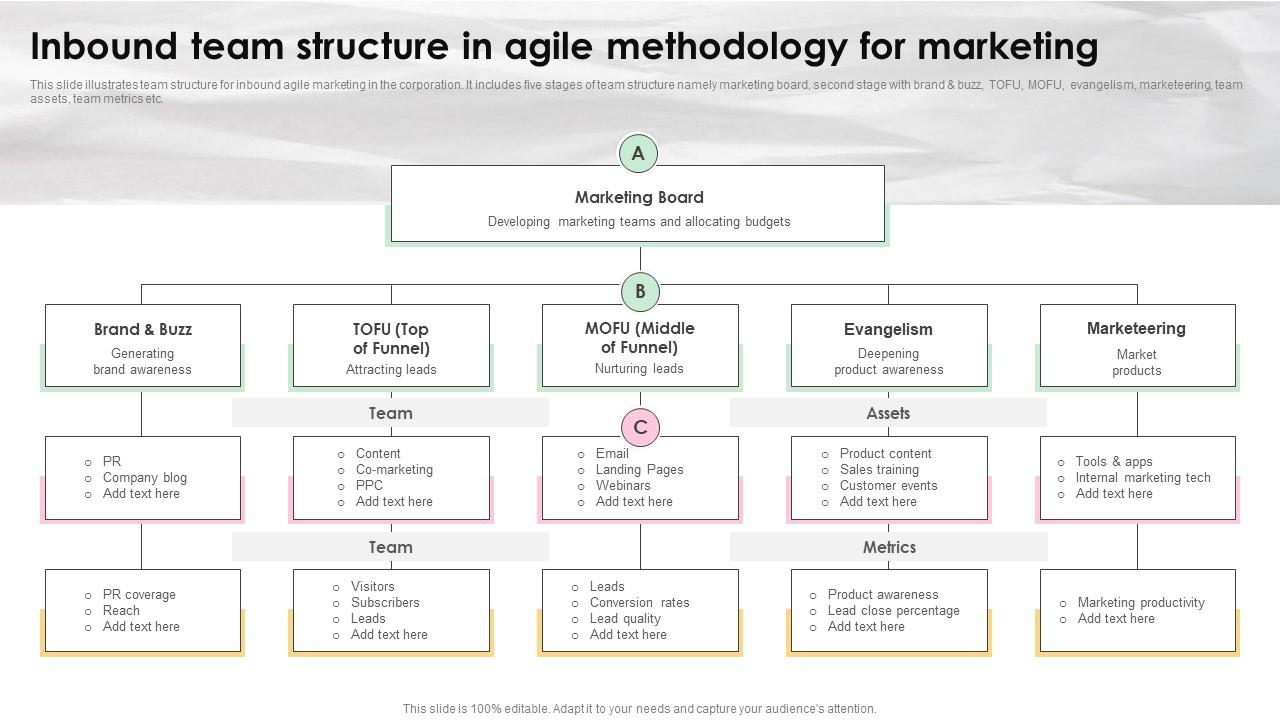“Never change your SEO team while shifting from SMB to enterprise, because once lost, never regained.” Join Maansi Sanghi and Arvind Parthiban for more such knowledge bombs as they deep-dive into the world of product marketing.
Maansi takes us through her journey of product marketing, and how the team at iMocha braved the tumultuous shift from an SMB model to an enterprise model of marketing. You’ll also find a lot of tips and tricks on how to refine and hone your processes and your pipelines inside your organization.
Tune in with Maansi and Arvind as they break down and examine the bare bones of a business and the best practices for marketing teams.
Key Resources
Structure your team
Having a power-packed team is very important if you’re expecting to create marketing channels. But if you’re expecting results from your marketing channels, the team needs to be not just power-packed but also well-structured.
Deciding how to structure your team starts at the top of the funnel. Based on what your product is, who you’re selling to, and where, pick the channel that’s most optimal for your product. It could be inbound channels, it could be outbound channels or it could be Account Based Marketing channels (ABM). Once you have clarity on your channels, structure your team based on what the channel needs.
For example, if your product targets the enterprise segment, you need an outbound team that maps itself to the enterprise ecosystem.

Who is indispensable in a marketing team?
There are 4 pillars in your team that you can’t do without.
- A resource to manage content and SEO (content writer)
- A resource to manage and update your website (web developer)
- A resource to handle inbound channels (digital marketer)
- Two resources for outbound (BDRs)
How is the iMocha marketing team set up?
Teams in iMocha are created based on KRAs.
- The outbound team is created in parallel with the in-house sales team and is structured in the same way—whether it is regional or industry-based.
KRA: create opportunities for sales. - The inbound team takes care of performance marketing using SEO, email campaigns, website automation, HubSpot configuration, etc.
KRA: get enough direct leads from the market and push to sales. - The content team expands the base of customers who you would market your product to.
KRA: increase subscriber count, and offer downloadable content, to increase opt-ins. - The brand team works on public relations, creates thought-leadership articles, and establishes relationships with market analysts.
KRA: expand the company’s visibility in the market - The events team manages pipeline generation and logistics for events to promote the company. They build partner relationships to help with GTM.
KRA: achieve their pipeline targets received from the partners.
How does someone shift from marketing for SMB to marketing for Enterprise?
Everything changes inside the organization when you decide to shift gears.
- Sales for SMBs are quick and direct. It’s taking a product and selling it as is.
Sales for enterprise takes a lot longer and requires the product to be customized and adjusted to fit the use case. - Lead generation for SMBs mainly comes from inbound users who already have the intent to purchase your product.
For enterprise, it’s usually from outbound and you have to reach out and create the intent to purchase. - Decision-making is faster and easier in SMBs because Budget, Authority, Need, and Timing (BANT) is readily available.
For enterprises, it’s a much longer process since multiple decision-makers need to sign off on it.

Moving from SMB to enterprise means you need a dedicated demand generation engine. To set that up you need:
- Clear messaging of your product from the product marketing team
- A perspective shift about ICPs – it’s not about what sport they love and what pet they have anymore; it’s about their designation, job security, and their position in the professional ecosystem.
- A value proposition that includes benefits or extra advantages that you have over your competitors.
- A product marketing team which is part of all the conversations related to the demand generation engine, including the ideation and exploration meetings.
Once you set up your demand generation engine, you might notice that the sale cycles for enterprises are longer and the conversion rates are low, even though your sample space is large. During these times, “Is this channel the correct channel?” is probably the wrong question. Low conversion rates in this case are a product marketing issue, not a channel issue. It is generally a sign that you’ve missed the correct (urgent) problem that your company can solve.
Shifting from SME to enterprise
There are three tenets to follow while shifting from SMB to enterprise.
- SEO does not change. You still need your SEO to be as effective as possible. Changing that will lower your ratings and it is a lot harder to regain that spot.
- Shift your mindset from a “gimmicky” approach (like having a visually cool website) to a more serious approach with clear value additions
- Train, train, train. Turn each interaction with your team members into an opportunity to talk about the enterprise approach.

At iMocha, there is constant information exchange among BDRs. After each demo session, they discuss all the relevant parameters: the ICP, how the conversation started, how the pitch went, and how the conversation changed because of the pitch. All the details of the sale are discussed and the information is made available to all the team members. With this, they can figure out what use cases keep repeating, and what use cases become irrelevant. This data helps to refine sales collaterals to a point where it contains any and all information required if it is well maintained.
How do you set OKRs for different departments?
Usually, the OKRs for each team are set based on the revenue associated with them.
The revenue generated by the inbound team can be analyzed to see where most of the revenue is coming from, and where revenue is weak. Processes can be put in place to ramp up the numbers on the channels where it is lacking.
OKR: hand over a certain number of pipelines to sales.
For outbound teams, since there is no immediate need, the sales need not always happen immediately—there is a good chance the sale might happen sometime in the future.
OKR: reach a certain ratio of immediate sales to future sales.
Each person in the marketing team should be familiar with content writing and should know how their work affects the revenue of the company.
OKR: generate a certain number of opt-ins.
The sales team’s job is to make sure they follow a proper cadence with their communications and use different channels of follow-up.
OKR: make a certain number of calls.
Have weekly meetings to discuss OKRs with all team members, but also have frequent meetings to check in and see how their work is going. If you only talk about OKRs in the meetings, that’s the only thing the team will do.
Measuring the potential of a sale
A lot of meetings happen on the top of the funnel, but only very few come out of the other end as sales because their need isn’t immediate enough. The solution is to nurture the potential sales for a long time. And there are ways to measure how effective the nurturing has been.
- Customer Engagement: whether the customer is responding to your messages and texts
- BDR follow-ups: whether the communication channel with a customer is active
-
- By direct messaging (Hi, how are you?) or on LinkedIn
- By sending them case studies
- By sending them new product updates
- Extending your reach: whether the customer can get you in touch with another prospective buyer
Positioning yourself in marketing events

Understand your audience for events, and tweak your event for it. You can make your booth at an event quirky and eye-catching to make people stop and look, but to keep them at your booth you need the right messaging. Big bold letters on top talking about the specific problems you’ll solve for your customers are sure to engage them meaningfully.
While the booth is active, have someone in charge of just observing the crowd. How many attendees were relevant for you? Who are the unexpected attendees? Why are they coming? Is that an opportunity for expansion?
Making the sale in the future
To convince your potential customers to become definite customers, provide them with case studies of your success stories with other customers. This shows them that your product is relevant to them and that your organization is credible.
Have a small booklet with information about all your products with visual cues for easy explanation.
Make your booth about the problem statement, and not about the brand. This makes your product more relevant to them.
Bonus round: Rapid Fire!
Maansi’s pet peeve as a marketer:
Maansi’s advice to budding marketers:
A marketing trend Maansi thinks will happen:
Maansi’s favorite marketing book:
Happy watching! 🎧





























